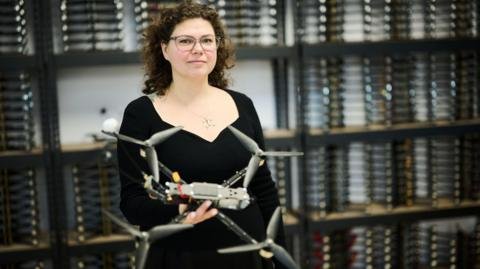From Petals to Payloads: How One Florist's Journey Mirrors the Rise of Drone Warfare
The conflict in Ukraine is heralded as the world’s first drone war, marking a significant shift in military technology and tactics. Amidst this upheaval, individuals like Kseniia Kalmus, once a co-owner of a flower shop in Kyiv, have transformed their trades to create drones for the defense of their country.
As Russia’s invasion began in February 2022, Kalmus transitioned from raising funds for traditional military needs to focusing specifically on first-person view (FPV) drones. These small quadcopters, often used for photography, are now repurposed as devastating weapons by attaching explosives, exemplifying a remarkable adaptation to warfare.
Prior to the war, Ukraine had few drone manufacturers; now there are hundreds producing a variety of drones, contributing to the claim that three-quarters of Russian casualties are attributed to drone strikes. According to Stacie Pettyjohn, a defense expert, Ukraine has fostered a grassroots movement of drone production, with many civilians crafting and donating drones to the military from their homes.
Drones are not only prevalent in Ukraine; they have become integral in conflicts worldwide, including the Middle East, Myanmar, and Sudan, driving countries to invest in drone technology as an affordable alternative to traditional air power. Major defense companies like Lockheed Martin and Boeing, as well as emerging startups, are adapting to this trend, leading to significant market growth. For instance, shares of AeroVironment have surged by over 400% since the invasion.
Conversely, the rise of drones has birthed a booming counter-drone industry, with nations scrambling to acquire anti-drone technologies to protect critical infrastructure. Companies like DroneShield are capitalizing on this demand as governments seek solutions to combat drone threats.
Looking ahead, experts predict that the next frontier in drone warfare will be driven by artificial intelligence (AI), paving the way for autonomous drones capable of operating without human control. Meanwhile, for those like Kalmus who have adapted to this new reality, the shift from art to combat production reflects a deeper fight for survival and cultural preservation amid war. Kalmus poignantly states, “This is a question of existence. We just fight for our country, for our existence, for our culture.”

